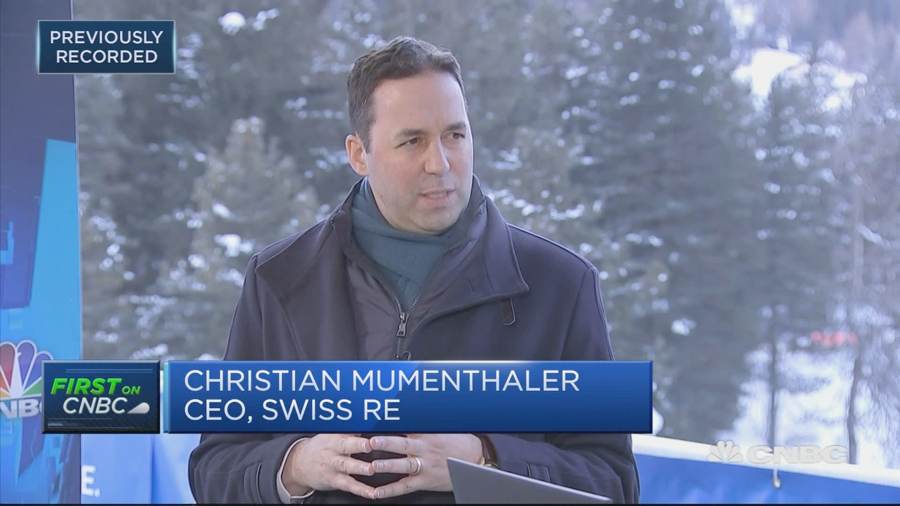Commenting on the completion of a recent landmark parametric earthquake catastrophe bond, issued for the benefit of an asset manager focused on mortgage investing, Swiss Re CEO Christian Mumenthaler explained why he sees this kind of transaction as important.
 The recently completed Sierra Ltd. (Series 2019-1) catastrophe bond was the first parametric catastrophe bond to cover earthquake risks embedded within a portfolio of mortgage investments.
The recently completed Sierra Ltd. (Series 2019-1) catastrophe bond was the first parametric catastrophe bond to cover earthquake risks embedded within a portfolio of mortgage investments.
This parametric earthquake cat bond provides an efficient hedge for mortgage related risks from earthquake on behalf of a mortgage focused investment fund, the MSR Opportunity Fund, under the management of Bayview Asset Management, LLC.
Global reinsurance firm Swiss Re played a key role in getting this pioneering cat bond transaction to market, with its capital markets unit acting as the sole structuring agent and joint-bookrunner for the Sierra Ltd. offering of notes.
Asked about this transaction by an interviewer from CNBC television during a broadcast from the World Economic Forum (WEF) 2020 annual meeting in Davos, Swiss Re CEO Mumenthaler took some time to explain his view of the arrangement and why it could drive greater interest in hedging risks, for those holding portfolios of assets with certain exposures embedded in them.
“This is really important,” Mumenthaler said.
Adding, “People don’t realise in the U.S. a lot of people are not insured. In California maybe only 12% of households are insured against earthquake and it’s an earthquake region.”
Discussing the parametric cat bond, Mumenthaler likened the investor buying the protection to a bank, or any other asset holder.
“What happens in the case of a big earthquake in the U.S.? You give the keys back to the bank,” he explained.
Swiss Re and others like the reinsurance firm spend a significant amount of time trying to educate industry sectors where risks are going uncovered and as a result presenting risks to people and the economy.
Earthquake risks held by mortgage banks and investors is one key areas where insurance and reinsurance structures can help asset holders, or banks holding mortgage risk, to carve out some of that exposure and secure a source of contingent liquidity that would flow to them after disaster strikes.
Mumenthaler suggested that finally these discussions are beginning to sink in, “We’ve been talking to a lot of them over the past years, but only now do they start to realise in their integrated risk management how big that risk is.”
As risk management techniques have become more sophisticated and corporates, or large entities that hold significant risk, have become more aware of the exposures they have, risk transfer is increasingly seen as a way to reduce the potential for downside.
It’s not just earthquake risk either. When you consider the world’s largest corporations, banks, investors and the like, the amount of climate and weather related exposure held on their balance-sheets is enormous.
In addition, newer risks such as cyber exposure and even business interruption are similarly held on balance-sheet in many cases, leaving the company, its shareholders or investors, its employees, customers and the communities around it exposed to financial or knock-on impacts and effects when disaster or catastrophe strikes.
Taking responsibility for the exposures you carry and ensuring that you do what you can to manage and mitigate those risks, by financial means, risk transfer, or whatever method, is a growing theme globally and along with more sophisticated risk management techniques will open the eyes of many owners of assets and operations to the potential for risk transfer, insurance and reinsurance to assist them.
The capital markets, as the deepest and most liquid pool of capital, alongside parametric triggers and instruments like catastrophe bonds, as responsive risk transfer structures, can be used to help risk bearers carve out some of the exposure, protect against it and ensure financing is available when the worst happens.
There is huge growth potential for these types of use-cases, for effecting risk transfer that neatly carves out an unprotected exposure and provides a responsive source of capital when disaster strikes, enabling the risk bearer to take responsibility for its exposure and protect those assets and people connected to it.
But for Mumenthaler its more than just a business prospect, as he explained, “There might indeed be an opportunity for the insurance and reinsurance industry at large, but what motivates us is more that people can recover after a big loss, that’s really what we’re here for.”
 View all of our Artemis Live video interviews and subscribe to our podcast.
View all of our Artemis Live video interviews and subscribe to our podcast.
All of our Artemis Live insurance-linked securities (ILS), catastrophe bonds and reinsurance video content and video interviews can be accessed online.
Our Artemis Live podcast can be subscribed to using the typical podcast services providers, including Apple, Google, Spotify and more.































